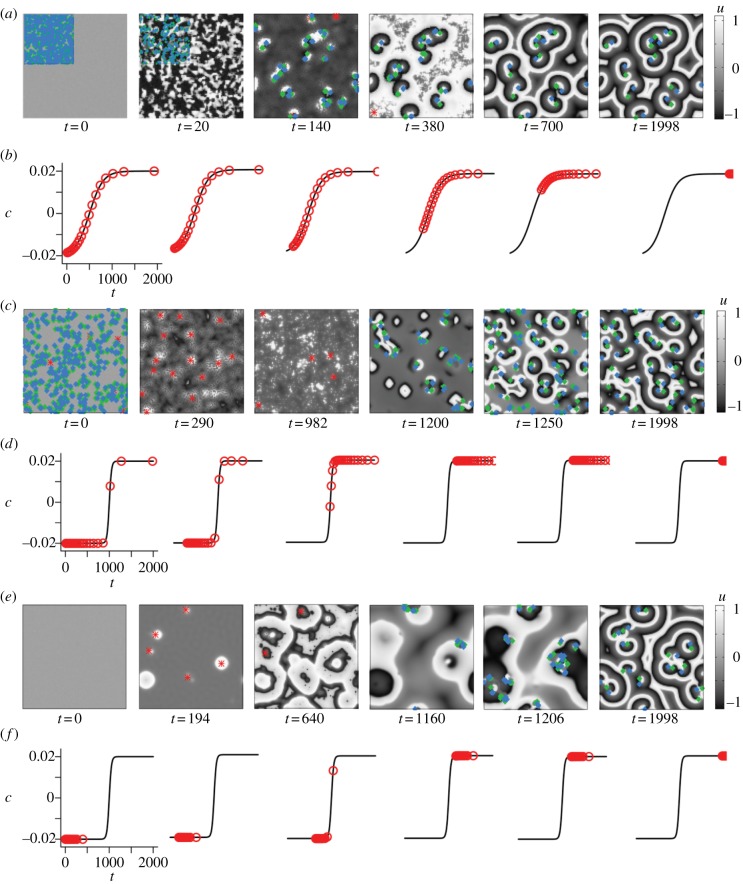Figure 3.
Evolution of (a,c,e) the variable u and (b,d,f) the corresponding distributions of the element property c with global time t in each of the spiral-generating developmental paths, cases (−+), (++) and (+−) (top to bottom). (a) In the case (−+), stable spiral waves develop from the phase singularities that form owing to inter-element variability at an early stage. The insets (first two panels on the left) or overlays indicate left-handed spiral tips (blue diamonds), right-handed spiral tips (green diamonds) or target waves (red asterisks). (b,d,f) Motion of elements on each of the developmental paths in c evolving as a function of the effective time (t+Δtij) of each element. One red circle represents a group of 5% of the elements. (c) In the case (++), many short-lived right- or left-handed spirals emerge initially and are succeeded by a high number of target waves (red asterisks), which then develop into spiral waves. These do not remain closely clustered but drift to form an even spread over the lattice. (e) In the case (+−), a relatively low number of target waves evolve, which give rise to spiral waves. These emerge within previously established zones of phase synchronization particular to each of the well-developed target wave sites and remain closely packed.

